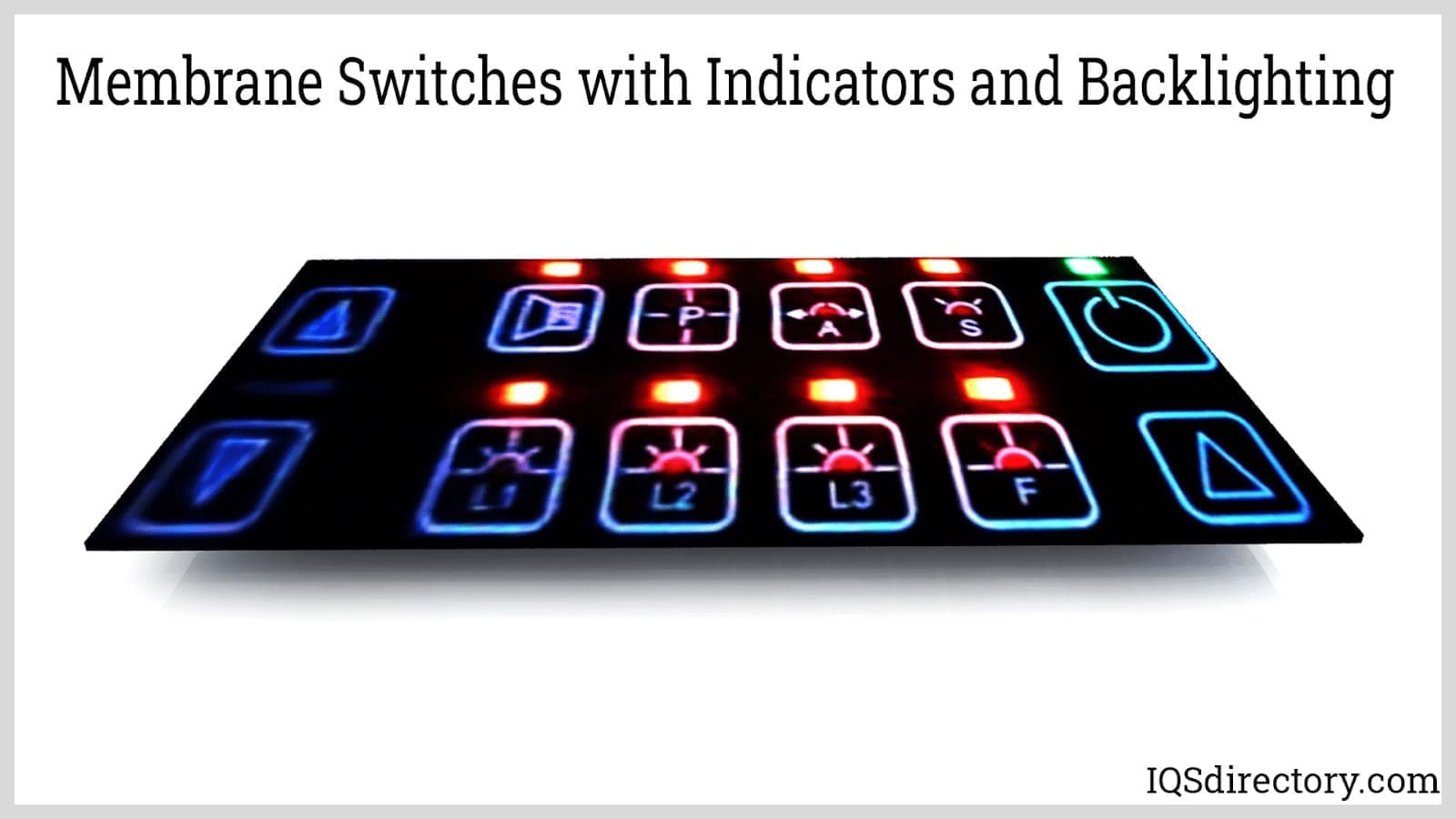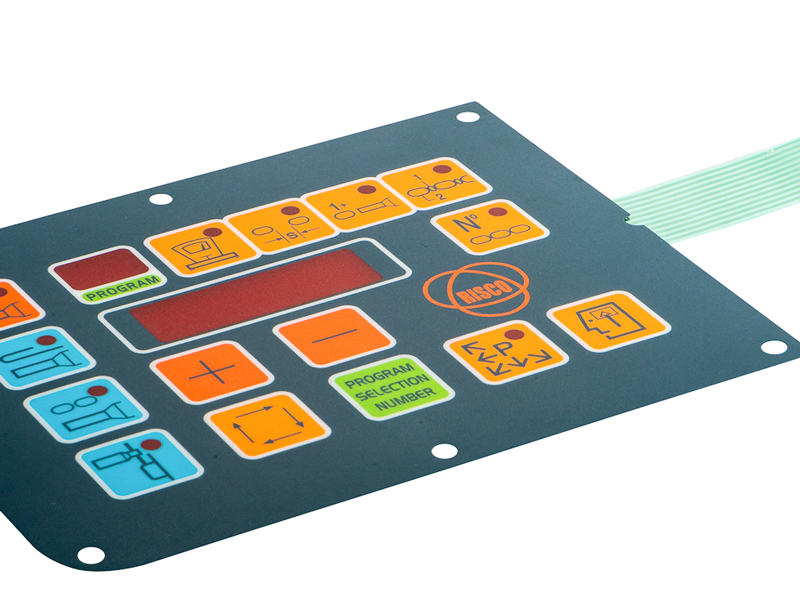The Role of Membrane Switch Technology in Improving Product Interfaces
The Role of Membrane Switch Technology in Improving Product Interfaces
Blog Article
Understanding Membrane Switches Over: The Trick to Dependable and long lasting Controls
Membrane layer changes represent an important aspect of modern-day interface style, mixing performance with resilience in numerous applications. These versatile components not only promote individual interaction however are additionally crafted to withstand the roughness of demanding environments, from medical gadgets to industrial equipment. Comprehending their building, operation, and the myriad advantages they use is important for developers and designers alike. As we explore the intricacies of membrane switches, it comes to be clear that their function in enhancing control systems is both complex and profound, increasing inquiries concerning exactly how ideal to take advantage of their capabilities in future developments.
What Are Membrane Switches?
Membrane switches are a sophisticated service in the world of individual interface technology, combining performance and design perfectly. These gadgets act as a user interface in between users and digital systems, incorporating several elements into a small style. Usually built from flexible, slim layers of products, membrane layer buttons are created to react to touch, making it possible for customers to interact with equipment and electronic gadgets successfully.
The key elements of a membrane switch consist of a published circuit layer, graphic overlay, and a spacer layer that stops unintentional activation. The graphic overlay can be tailored to mirror brand identity or individual choices, boosting aesthetics while making certain functionality. Membrane layer buttons are commonly utilized in various applications, consisting of medical devices, consumer electronics, and commercial equipment, owing to their longevity and resistance to environmental factors such as wetness and dirt.
Among the vital benefits of membrane layer switches is their ability to endure wear and tear, making them perfect for high-traffic atmospheres. In addition, they are light-weight and need minimal space, permitting innovative designs in item growth. Generally, membrane layer switches over represent a reliable and functional choice for modern digital interfaces, weding modern technology with user-centric style principles.

How Membrane Layer Switches Over Work
The operation of membrane layer switches hinges on an easy yet efficient device that converts user input into electronic signals. When a user presses the switch, the leading layer warps, permitting a conductive aspect in the circuit layer to make call with an equivalent conductive pad on the bottom of the graphic overlay.
The design of membrane switches can differ, but they commonly integrate domes or tactile components to give feedback to the individual, improving the general experience. The materials utilized in membrane switches, such as polyester or polycarbonate, add to their longevity and resistance to ecological elements, consisting of wetness and dust. The printed circuits are generally encapsulated, which secures them from wear and tear over time.

Benefits of Membrane Switches
One of the main advantages of membrane buttons is their adaptability in style, permitting them to be customized to fulfill specific customer requirements and visual needs. This versatility expands to numerous sectors, where various shapes, dimensions, and shades can be utilized to improve user communication and aesthetic allure.
Furthermore, membrane layer switches are known for their resilience. Constructed from durable materials, they are resistant to dirt, dampness, and physical wear, which substantially expands their life expectancy contrasted to standard mechanical switches. This longevity makes them particularly ideal for high-traffic settings and applications requiring long life.

In addition, membrane buttons provide a streamlined account, bring about a thinner style that can be incorporated into numerous gadgets without adding bulk. This function not just enhances the aesthetic allure yet also adds to an extra ergonomic item layout.

Applications of Membrane Layer Switches
Straightforward and versatile, membrane switches find applications throughout a variety of industries, including medical gadgets, customer electronics, and industrial equipment. In the clinical area, these switches are important to devices such as analysis equipment, client monitoring systems, and mixture pumps, anchor where reliability and simplicity of cleaning are essential. Their ability to maintain and hold up against harsh settings performance makes them optimal for such applications.
In customer electronics, membrane layer buttons are used in products like microwaves, cleaning makers, and remote controls - membrane switch. Their sleek layout enables intuitive user interfaces, enhancing the overall individual experience while giving durability and resistance to wear and tear
Industrial equipment also gains from membrane buttons, specifically in control panels for equipment and automation systems. These buttons use protection against dust and dampness, making sure consistent efficiency in challenging environments. Their customizable functions allow suppliers to tailor them to details operational demands, enhancing efficiency and functionality.
Picking the Right Membrane Layer Switch
When choosing a membrane layer switch, it is vital to take into consideration numerous aspects that influence performance and suitability for certain applications. The main considerations consist of environmental conditions, responsive comments, toughness, and layout specs.
First, evaluate the operating atmosphere; buttons revealed to dampness, chemicals, or severe temperature levels call for details materials to ensure long life and capability. Next, examine the need for tactile comments. Depending on individual communication, some applications might benefit from a tactile reaction to verify activation, while others may choose a non-tactile layout for visual factors.
Longevity is another important aspect; membrane layer switches need to be made to withstand regular use, effects, and abrasion. Ensure the picked switch can withstand the anticipated lifecycle, especially in high-usage situations.
Final Thought
In final thought, membrane changes serve as important parts in the layout of sturdy and trustworthy control systems across different markets. The flexibility of membrane layer changes enables for customized remedies that fulfill specific functional requirements, enhancing their value in modern innovation.
Membrane layer switches over represent a crucial aspect of modern-day interface layout, mixing capability with resilience in different applications.Membrane layer buttons are an advanced remedy in the world of user interface modern technology, integrating performance and style seamlessly. Usually constructed from adaptable, slim layers of materials, membrane layer switches Click Here are designed to respond to touch, allowing individuals to communicate with machinery and electronic published here tools effectively.
The layout of membrane layer switches can differ, yet they frequently include domes or responsive aspects to offer responses to the user, boosting the general experience.In final thought, membrane layer changes serve as important elements in the layout of reputable and durable control systems across various industries.
Report this page